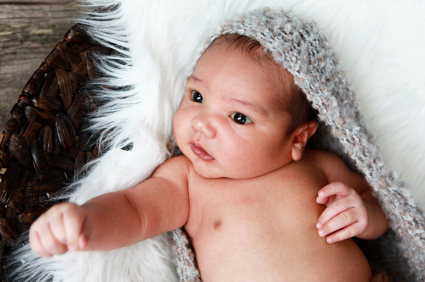 The Arizona Newborn Screening Program screens more than 80,000 babies for a panel of 29 disorders annually. Although babies born with these disorders may appear to be normal at birth, with time the disorder may have a devastating or lethal effect on the infant’s health and development. Early screening, detection, and quick treatment of these disorders can, in many cases, help kids avoid illness, developmental delays, and even death.
The Arizona Newborn Screening Program screens more than 80,000 babies for a panel of 29 disorders annually. Although babies born with these disorders may appear to be normal at birth, with time the disorder may have a devastating or lethal effect on the infant’s health and development. Early screening, detection, and quick treatment of these disorders can, in many cases, help kids avoid illness, developmental delays, and even death.
In 2014 House Bill 2491 required the Department to revise our Newborn Screening rules to include hearing tests on all newborns, add screening for critical congenital heart defects (CCHD) and consider adding a screening for severe combined immunodeficiency. On March 23, 2015, the Department received approval from the Governor’s office to move forward with the rulemaking to implement these requirements.
The screening test for CCHD uses pulse-oximetry, a test that happens in the hospital. It’s a device that is placed on the foot of a newborn and measures the baby’s oxygen levels. A low oxygen reading can be a sign that the baby might have a heart problem. Congenital heart disease occurs in approximately eight in every 1,000 live births, and if left undetected, children are at risk for the development of serious complications within the first few days or weeks of life. Most hospitals already do this screening, but our new rules will make the screening a requirement.
The law also requires us to take a look at adding severe combined immunodeficiency disorder (SCID) disease to our screening panel. In October 2014, our Newborn Screening Advisory Committee met and recommended that we include the screening test for SCID as part of our panel. This test would require some new equipment and increased costs, so we’d need to get the authority to increase our testing fee by $10 to pay for the testing costs before we could add it to our panel of tests. The good news is because the screening test for SCID is so reliable, we’d only need to test the first sample (taken at the hospital).
We expect to publish the draft rules for comment later this spring and then implement the updated rules July 1st.










A CHD is found in 1 in ever 100 live births!
Not sure if the screening test for CCHD is so important. We didn’t make it when I was pregnant for the 1ts time 9 years ago, but last year when I was waiting for our 2nd baby we decided to make it. The results were good but now I think this procedure is just to make parents not to panic.
I think it is important to make the distinction between CHD (congenital heart disease) and CCHD (critical congenital heart disease). While the incidence of CHD reported above is around 8-10 per 1000 births, CCHD is only about 20-25% of CHD cases (about 2 per 1000 births). CCHD is usually defined as needing an invasive procedure sometime in the first year of life to avoid significant morbidity or mortality. The pulse oximetry screen is really to pick up CCHD, not all CHD. An example is HLHS or hypoplastic left heart syndrome where babies did not appear cyanotic enough at birth and did not have a significant heart murmur and would be discharged from the hospital, only to come back to the hospital a few days later in critically ill condition when the “PDA” closed. The pulse ox screen is a very simple, noninvasive screening test that will help pick up CCHD early and intervention can be done.